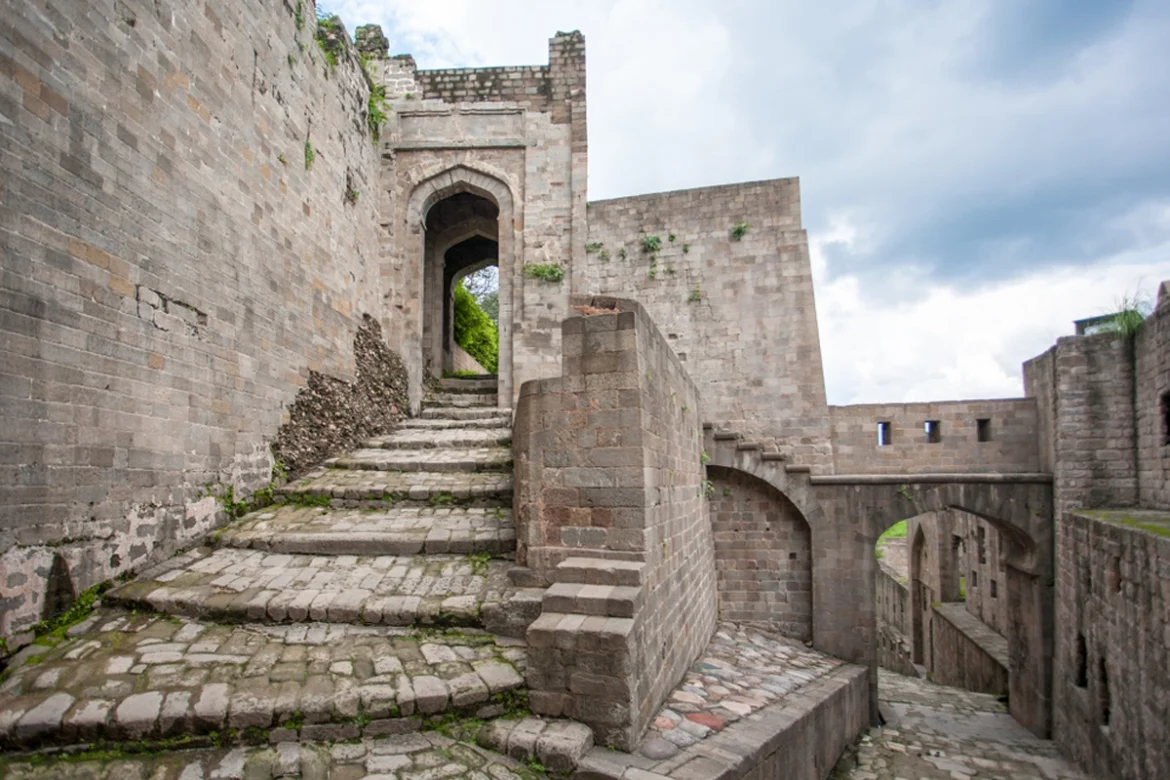Table of Contents
Every time I crossed it, I pondered what was behind the towering fortifications of Kangra Fort in Himachal Pradesh, but I never got the answer. People consider Kangra Fort, located in Kangra, a popular area in Himachal Pradesh, India, to be the country’s oldest fort. I frequently heard stories about its hauntings, but I dismissed them as folktales. However, I’ve often wondered how the greatest fort in the Himalayas might appear from within.
Despite the years, we never embarked on the journey, believing it to be poorly maintained and unsuitable for child-friendly exploration. However, when we visited Dharamshala, we discovered that ASI had rebuilt Kangra Fort and it was now open for commerce. The history enthusiast in me jumped for joy, and we decided to take a day trip to Kangra Fort with the family.
History
Kangra Fort is located approximately 20 kilometers from Dharamshala and just outside of Kangra town. The history of the fortress is fascinating. The royal Rajputs of Kangra’s Katoch Dynasty are believed to have built it in the fourth century BC, during the Mahabharata period. The fort was extremely affluent, with vast treasure concealed in the 21 wells erected within the complex. This resulted in several invasions by the rulers of surrounding states and foreign territories. Mahmud Ghazni raided the Kangra fort’s wealth in 1009, Firuz Shah Tughluq in 1360, and Sher Shah in 1540. Ghazni looted eight of the twenty-one wells, and in the 1890s, the British discovered five more. According to the locals, there are still eight wells within the citadel that hold riches awaiting discovery.
“He who holds the fort, holds the mountains” is a well-known proverb in Himachal. Many dynasties attempted to take control of Kangra Fort in Himachal Pradesh. In the following centuries, the Katochs fought against the Mughals, Gurkhas, and the Sikh army to defend their territories and fort. Even though the Katoch family lost control of Kangra Fort several times, they were eventually able to reclaim it.
Kangra fort withstood over 50 attacks before succumbing to abandonment after a devastating earthquake destroyed substantial portions of the fort and palace in 1905.
Visit the Kangra Fort.
Kangra Fort in Himachal Pradesh offers a unique experience. Ascending the fort’s steps, you will soon realize the splendor of its offerings, which are a wonderful blend of history and nature. The fort’s construction, which sits on a cliff in the heart of the Dhauladhar mountain range, is the primary reason for its strong defensiveness. The fort’s layout has effectively taken advantage of the surrounding nature, using the mountains to form its natural fortifications. With a single entrance, the winding stairs are tight, with mountains and ramparts on either side to guard the path up to the palace that once stood on top of the hill.
The entry is a multi-level courtyard with manicured lawns, a historic water tank, and a small, ruined room in the corner. According to my audio guide, this lower section of the fort housed the garrison and soldier barracks, but only some parts of the hammam remain. As I approached the fort, it reminded me of the Golconda Fort in Hyderabad. Kangra Fort’s architecture follows the same approach, with only one entrance. The winding path ascends via numerous gates before reaching the top courtyard, which once housed the royal palace, residential quarters, and opulent temples.
Gates of Kangra Fort.
Every gate in the fort has a story behind it. The fort consists of 11 gates and 23 bastions. Maharaja Ranjit Singh of Punjab built the first gate, known as the Ranjit Singh Gate, to commemorate his triumph over the beautiful fortress. He erected another gate named after him to improve the fort’s fortifications.
“You must pass through the gate leg first; never lead with your head because if there’s an enemy on the other side, you might lose your head,” advised his grandfather to Tikaraj Aishwarya Katoch, the current heir of India’s oldest living royal line. ASI provides a highly instructive audio tour of Kangra Fort, filled with numerous such small incidents.
The following gates are the Ahini, Jahangiri, and Andheri gates. Upon entering Ahini Gate, you will notice the surrounding fortifications and bastions that served as soldiers’ lookout points. On the way, you may notice the Katoch crest, which is a black deer with a fluttering scarf wound around its neck. On one side is an engraving of Lord Ganesha, while on the other is Goddess Ambika, the Katoch clan goddess.
A few steps ahead, you’ll see a picture of Lord Hanuman and Lord Ganesha on the wall that leads to the next gate, Jahangari Gate. Jahangir, the Mughal emperor, built this gate to commemorate the Mughals’ victory against Kangra Fort. The ramparts along the side provide a panoramic view of the valley and the Dhauladhars. We paused to gather our breath and appreciate the tranquility.
The next gate, known as Andheri Gate, employed an unusual strategy against its enemies. The path leading to it is tiny and covered by thick walls on both sides, resulting in sudden darkness for anyone attempting to cross it. For the adversaries, this was a period of confusion because they would wait for their eyes to adjust, and by the time they realized what was happening, it was too late.
Temple remnants
The second gate, with statues of the goddesses Ganga and Yamuna on either side, welcomes you into the huge courtyard. The sight of the ruins will make you wonder how beautiful the view would have been if the magnificent temples had been in their full glory. The L-shaped structures on the right side resemble rooms, but some are in shambles. Crossing the courtyard, a flight of steps leads up to what was once the palace. But, before you go any farther, take some time exploring the temple remains; who knows what secrets you’ll discover?
Kangra Fort’s greatness stemmed not only from its strategic location and wealth but also from its temples. Himachal Pradesh is also known as Devbhoomi, or the Land of the Gods. The temples of Kangra Fort in Himachal Pradesh were well-known throughout the region. The temple of Goddess Ambika within the fort is thought to be the earliest Ambika temple in India. Over the years, surrounding chiefs and followers lavished the temples with expensive presents and jewels, accumulating a large amount of riches in the royal treasury. My hypothesis is that the temples’ grandeur reflected their stature.
Unfortunately, years of thievery, followed by a severe earthquake, destroyed substantial portions of the temples. Today, the pillar bases, broken carved pillars, temple walls, and remnants of the stones that formerly supported the temple serve as reminders of those beautiful days.
While the three main temples, the Ambika Mata temple, the Laxmi Narayan temple, and a Jain temple, are no longer in use, there is a small temple near the stairs that is still operational. The sound of chanting and bhajans only enhanced the atmosphere and made it more enchanting. I told myself that there was more to see and began climbing the stairs to the highest point of the fort.
On top of Kangra Fort.
The final gate, known as Mahal Darwaza or Palace Gate, enters the palace courtyard. There are railings to protect the courtyard, which has amazing panoramic views of the snow-capped mountains. In the center of the platform, there is a massive subterranean water tank and a few damaged structures. But what caught my attention was how incredible it would have been to live in a luxurious palace with such spectacular vistas. I paused on the bench, allowing myself to take in everything: the history, the beauty, and the tranquility. But like any mother, my break ended abruptly when my son informed me that our day’s adventure had come to an end and it was time to head home.
Looking for more travel ideas in Himachal Pradesh? Learn how to plan a road trip through the state.

